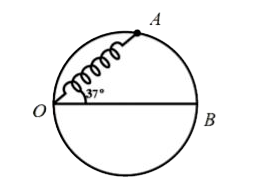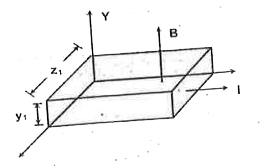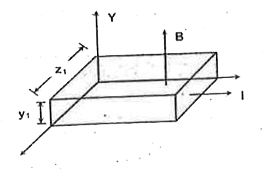Virat Kohli wants to wear 6.023×1021 Ag atoms in the form of a ring.His Silver-Gold-Copper alloy ring consists of 20% of silver.The mass of the ring is 0.9x .What is "x"?
Step by step video & image solution for Virat Kohli wants to wear 6.023times10^(21) Ag atoms in the form of a ring.His Silver-Gold-Copper alloy ring consists of 20% of silver.The mass of the ring is "0.9x" .What is "x"? by Chemistry experts to help you in doubts & scoring excellent marks in Class 12 exams.
Similar Questions
When 6.25×1018e− are passed through aqueous Silver nitrate, '0.00112' grams of Silver is deposited. Then electrochemical equivalent of Ag is x×10−3 then x =
View SolutionOne end of a spring is fixed at point O of a smooth fixed horizontal circular ring of rdius R=2m. A bead having mass 0.3 kg is pivoted on the ring and the other end of spring is connected to it. The natural length of the spring is R and spring constant is k=10N/m.
AB=6R5 and line OB is the diameter of the ring. If the normal reaction on bead due to the ring ag A is 0, what is the speed of the bead at A.
 View Solution
View Solution
Knowledge Check
- Question 1 - Select One
A copper ring has a diameter of exactly 25mm at its temperature is 0∘C. An aluminium sphere has a diameter is exactly 25.05mm and its temperature it 100∘C. The sphere is placed on top of the rind and two allowed to come to thermal equilibrium. The ratio of the mass of the sphere and ring is
(given αcu=17×10−6.∘C−1αAl=2.3×10−5.∘C−1 specific heat of Cu is 0.0923cal/g∘C and for Al is 0.215cal/g∘C.A1/5B23/108C23/54D216/23 - Question 2 - Select One
The basic principle underlying the hall effect is the Lorentz force. Whenk an electron moves along a direction perpendicular to an applied magnetic field. It exeriences a force acting normal to both the directions and moves in response to this force and the force exerted by the internal electric field. For an - n-type bar shaped semiconductor, the carries are predominatly electrons of bulk density n. We assume that the constant current I flows along the x-axis from left to right in the presence of a magnetic field toward the negative z-axis resulting in an excess surface electrical charge on the sides of the sample. this charge results in the hall voltage a potential drop across the two sides of the sample
Thre transverse voltage is the hall voltage VH and its magnitude is equal to IB/qnD, where I is the current B is the magnetic field, d is the sample thickness and q is the elementary charge. A silver ribbon lies as shown in the adjacent figure (z1=11.8mm and = 0.23 mm) carrying a current of 120 A in the x -direction in unifrom magnetic field B = 0.95 T. If electron density is 5.85×1028/m3 then

What is the magnitude and direction of electric field ?A4.5×10−3 V/m in + z dirB45×10−3 V/m In - z dirC2.25×10−3 V/m + x dirD2.25×10−3 V/m In - zdir - Question 3 - Select One
The basic principle underlying the hall effect is the Lorentz force. Whenk an electron moves along a direction perpendicular to an applied magnetic field. It exeriences a force acting normal to both the directions and moves in response to this force and the force exerted by the internal electric field. For an - n-type bar shaped semiconductor, the carries are predominatly electrons of bulk density n. We assume that the constant current I flows along the x-axis from left to right in the presence of a magnetic field toward the negative z-axis resulting in an excess surface electrical charge on the sides of the sample. this charge results in the hall voltage a potential drop across the two sides of the sample
Thre transverse voltage is the hall voltage VH and its magnitude is equal to IB/qnD, where I is the current B is the magnetic field, d is the sample thickness and q is the elementary charge. A silver ribbon lies as shown in the adjacent figure (z1=11.8mm and = 0.23 mm) carrying a current of 120 A in the x -direction in unifrom magnetic field B = 0.95 T. If electron density is 5.85×1028/m3 then

What is the value of hall emf?A53 mvB53μVC5.3 mVD5.3μV
A ring of radius R=4m is made of a highly dense material. Mass of the ring is m1=5.4×109kg distributed uniformly over its circumference. A highly dense particle of mass m2=6×108kg is placed on the axis of the ring at a distance x0=3m from the centre. Neglecting all other forces, except mutual gravitational interacting of the two. Caculate
(i) displacemental of the ring when particle is at the centre of ring, and
(ii) speed of the particle at that instant.View SolutionFigure shows a distance ring of radius R = 43.0 cm. Two small charged beads are on the ring : Bead 1 of charge +20.0μC is fixed in place at the left side , bead 2 of charge +6.00μC can be moved along the ring. The two beads produce a net electric field of magnitude e at the center of the ring. At what (a) positive and (b) negative value of angle θ should bead 2 be positioned such that E=2.00×105N/C ?
 View Solution
View Solution5.0 g of a certain element X forms 10.0 g of its oxide having the formula X4O6. What is the atomic mass of X
View Solution2.49×10−18g of an element X contains 2.0×104 atoms. What is the atomic mass of the element X ?
View SolutionA silver and copper voltameter are connected in parallel to a 12V battery of negligible resistance . In 30 minutes , 1.0 g of silver and 1.8 of copper are deposited . At what rate is the energy being delivered by the battery . The electrochemical equivalents of Ag and Cu are 11.2×10−4gC−1 and 6.6×10−4gC−1 , respectively .
View Solution
